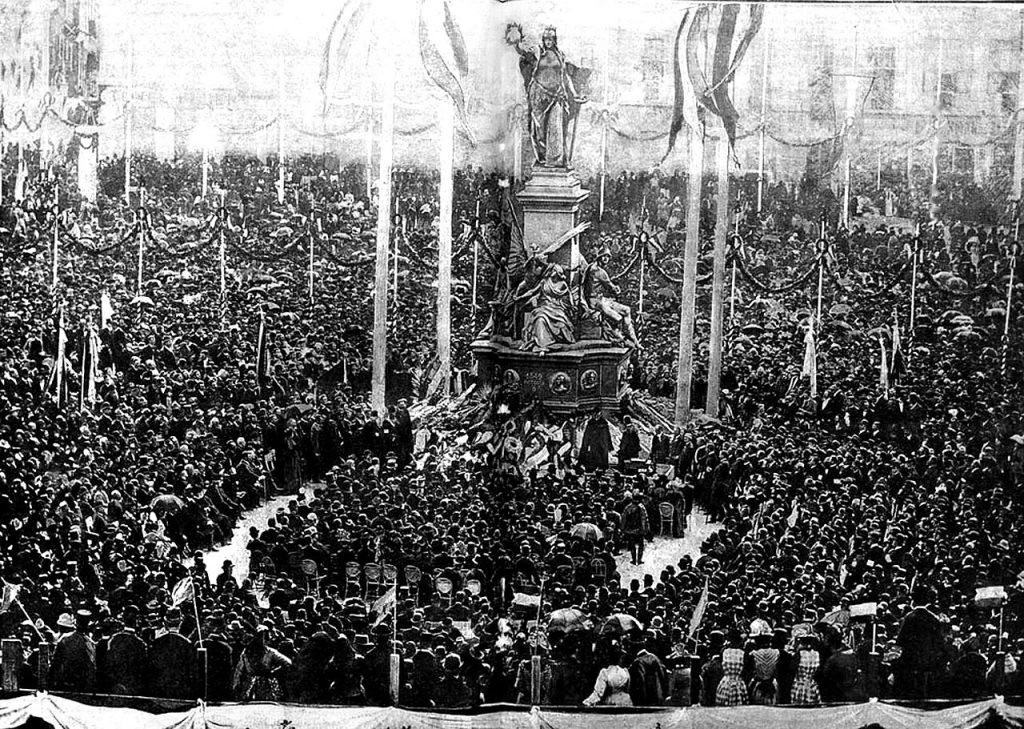Besides the traditional Christian holidays, the Hungarian calendar has four other memorable dates, two of which are linked to the defeated 1848 revolution against the Habsburgs. Why celebrate a defeat?
It’s complicated. With the enormous benefit of hindsight, here is our take on it.
The year of grace 1848 was a tumultuous one across the whole of Europe. To this day, it brought us the largest revolutionary wave in Europe, even including the 1989 revolutions, which led to – or according to others, were allowed by – the imminent collapse of the Soviet Union.
The year of 1848 went down in history as the Spring of Nations, with the revolutions spreading over 50 countries, but the Hungarian one was by far the longest and marked by the most bloodshed. While it was anti-imperial in nature, it was unlike many other contemporary revolutions. In France, for example, it was the revolution of the bourgeoisie against the aristocracy. As Alexis de Tocqueville wrote in his Recollections: “society was cut in two: those who had nothing united in common envy, and those who had anything united in common terror.”
But in these parts, it was different. In Hungary, it was a nation – from the very poor to the very rich – united in demanding and eventually fighting for independence from the Imperial Court in Vienna. The Kingdom of Hungary was part of the Austrian Empire throughout this entity’s existence from 1804 to 1867. And the revolution – which began on March 15 and is now one of the two holidays we mentioned earlier – was also joined by members of other nations: most famously, Polish general Józef Bem, revered as a national hero by both countries and known to Hungarians as Bem József or, more affectionately, “Bem apó” (Father Bem).
While the imperial court in Vienna initially accepted the 12 points demanded by the revolutionaries (including freedom of press, an independent Hungarian ministry residing in Buda-Pest and responsible to a popularly elected parliament, the formation of a National Guard, complete civil and religious equality, trial by jury, a national bank, a Hungarian army, the withdrawal of Austrian troops from Hungary, the freeing of political prisoners, and the union with Transylvania), the revolution grew into a full-blown war of independence.
The war dragged on for a year and a half. The Hungarian troops – including a significant number of Hungarians who deserted the Austrian Army – were initially successful. But when Russian Emperor Nicholas I (nicknamed the “gendarme of Europe” for his role in suppressing several national revolutions in the 1830s), offered assistance to the Habsburgs, the overwhelming imbalance of forces made defeat inevitable. At the onset of the war, the armies of the opposing sides were roughly equal in size (around 170,000 each), but when Nicholas I’s 200,000 troops joined forces with the Austrian Imperial Army, all hope was lost.
After several bloody battles, Hungarian troops eventually surrendered at Világos (now Şiria, Romania) to the Russians on August 13th, 1849, in the hope that the Russians would be more lenient. But they handed the army over to the Austrians, who two months later set an example by executing 13 of the revolution’s military officers (12 generals and one colonel) just outside the Arad fortress (now in Romania) on October 6th, 1849, exactly 170 years ago. Not only were they executed but they were denied an honorable form of execution as military officers in wartime and all but four were hanged like common criminals. Hungarians remember them as the 13 Martyrs.
In the longer run, however, the revolution did reach its goal: In 1867, Austria and Hungary reached the Compromise, which led to the creation of the Austro-Hungarian Monarchy (the Hungarian half was led by its own king ) and ushered in a long era of prosperity that was cut short by World War I.
The fight may have been doomed, but to this day it remains a heroic chapter of Hungarian history, with one smaller nation battling two giants. Commemorations of the revolution were and still are a national symbol for ethnic Hungarians in the parts that Hungary lost to neighboring countries after World War I (Romania, Czechoslovakia, Serbia, and Austria).
While communist Romania did everything in its power to suppress all commemorations of the Arad executions and even went as far as dismantling a monument to the martyrs, after the 1990 regime change, the place of the execution again became a symbol of national pride. The monument – the Statue of Liberty by Hungarian sculptor György Zala – was eventually restored in 2004 after a long fight with reluctant Romanian authorities.
Odd, but this how a failed revolution remains one of the defining moments of Hungarian history and why we still commemorate it today.
 The inauguration of the Statue of Liberty in Arad on October 6th, 1890 (image from contemporary newspaper Vasárnapi Újság)
The inauguration of the Statue of Liberty in Arad on October 6th, 1890 (image from contemporary newspaper Vasárnapi Újság)
Title image: The second battle of Komárom (on July 2nd, 1849), painting by Mór Than (Wikimedia Commons)
You can also have a look at our gallery of this year’s commemorations on October 6.